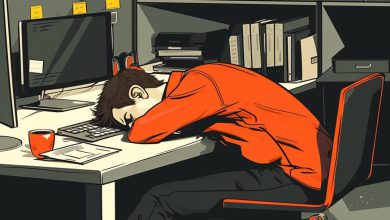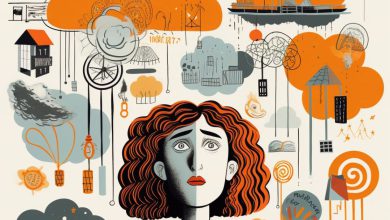Art Therapy for Depression: Unleashing Creativity for Healing and Well-Being
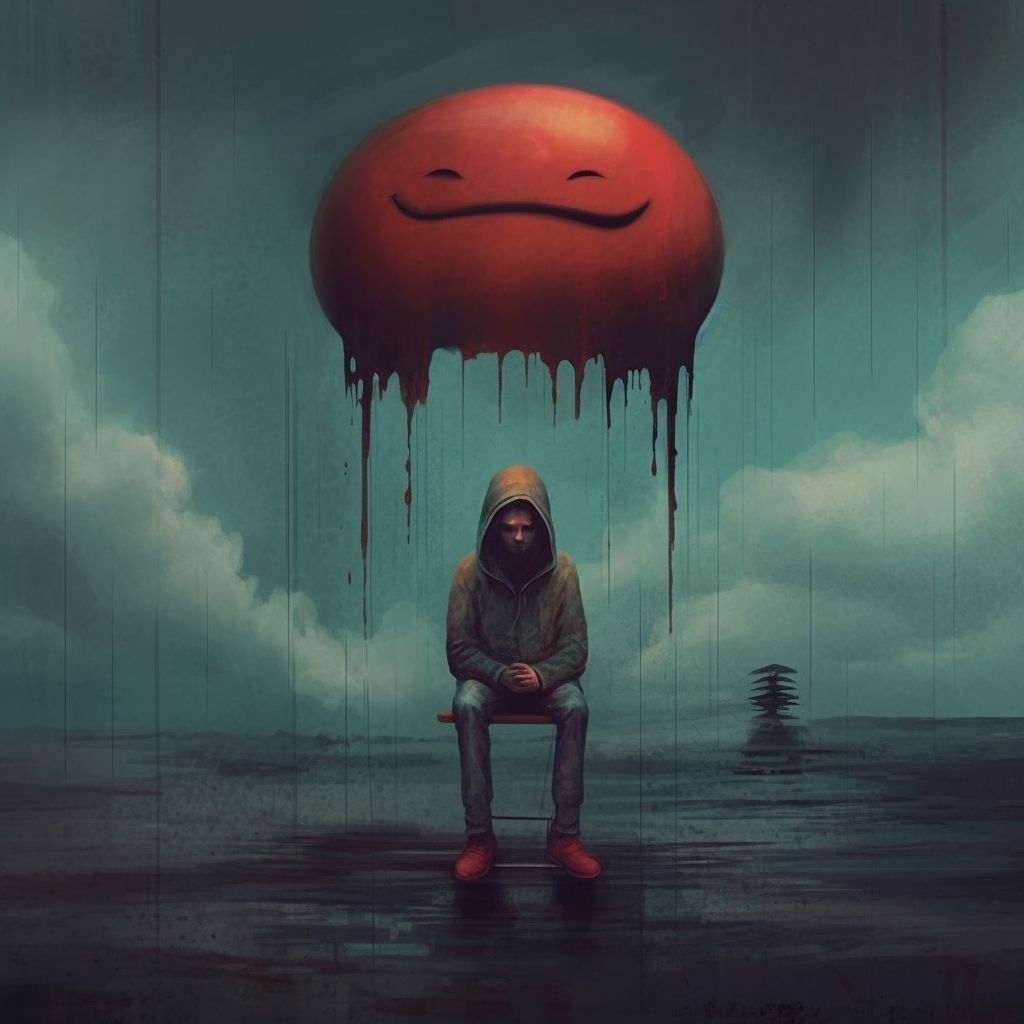
Depression affects millions of people worldwide, casting a heavy shadow over their lives and often leaving them feeling isolated and hopeless. While traditional therapeutic approaches have proven effective, there is a growing recognition of the healing potential of art therapy. Imagine a world where colors, shapes, and creative expression hold the key to unlocking a path to recovery from depression.
In this article, we survey the transformative nature of art therapy for depression and explore scientific evidence that supports its effectiveness in alleviating depression.
Understanding Depression
Depression is a complex mental health disorder characterized by persistent feelings of sadness, loss of interest or pleasure, changes in appetite or sleep patterns, low energy levels, and difficulty concentrating. It goes beyond the normal fluctuations in mood that everyone experiences, impacting a person’s ability to function in daily life. According to the World Health Organization (WHO), depression is the leading cause of disability worldwide, affecting over 264 million people.

Depression exerts a profound impact on individuals’ mental health, leading to a range of negative consequences. It can impair cognitive function, making it challenging to concentrate, remember details, or make decisions. Depression often diminishes one’s sense of self-worth and can trigger feelings of guilt, hopelessness, and thoughts of self-harm or suicide. Moreover, it can strain relationships, hinder work performance, and lead to social isolation. The persistent nature of depression can disrupt daily functioning and impede individuals from pursuing their goals and passions.
Given the debilitating effects of depression, seeking effective treatments is crucial for recovery and restoring mental well-being. While traditional therapeutic interventions like talk therapy and medication have proven effective for many individuals, alternative approaches such as art therapy are gaining recognition for their unique benefits. Art therapy offers a creative and expressive outlet that transcends traditional verbal communication, enabling individuals to explore their emotions, release pent-up feelings, and gain insights into their struggles.
What Is Art Therapy?
Art therapy is a specialized form of psychotherapy that utilizes the creative process of art-making to improve individuals’ emotional well-being and promote self-discovery. It involves the use of various art materials, such as paints, clay, and collage, as a means of self-expression and communication. Art therapists, who are trained mental health professionals, guide individuals in exploring their inner experiences, emotions, and thoughts through art.

The principles of art therapy revolve around the belief that the creative process itself is therapeutic. The focus is not on the artistic outcome but on the individual’s personal journey of self-exploration and growth. Art therapy embraces a non-judgmental and supportive environment, allowing individuals to express themselves freely and discover new insights through their art.
Art therapy differs from traditional talk therapy approaches by incorporating visual and tactile elements into the therapeutic process. While talk therapy primarily relies on verbal communication, art therapy integrates non-verbal expression, enabling individuals to bypass language barriers and access deeper emotional states. Through the use of art materials, individuals can tap into their subconscious, explore unresolved emotions, and communicate aspects of their experiences that may be difficult to verbalize.
Art therapy also provides a tangible representation of one’s inner world, making thoughts and emotions more accessible for exploration and discussion. The art created during therapy sessions serves as a visual and symbolic reflection of the individual’s thoughts and feelings, fostering self-awareness and facilitating dialogue between the therapist and the client.
Benefits of Art Therapy for Depression
According to the National Library of Medicine, art therapy offers a range of potential benefits for mental health, including its application in the treatment of depression. By engaging in the creative process, individuals with depression can experience the following advantages:
- Emotional expression and release: Art provides a safe outlet for the expression and release of complex emotions, allowing individuals to externalize and gain a deeper understanding of their feelings.
- Stress reduction and relaxation: Engaging in art-making can be inherently calming and meditative, helping individuals to reduce stress, relax, and experience a sense of inner peace.
- Self-discovery and identity exploration: Art therapy encourages self-reflection, enabling individuals to explore their sense of self, values, and beliefs. This process can contribute to a greater understanding of one’s identity and foster personal growth.
- Empowerment and increased self-esteem: The act of creating art and witnessing one’s creative abilities can boost self-esteem, fostering a sense of accomplishment and empowerment.
Art Therapy and Depression

Art therapy can serve as a powerful complementary treatment for depression, working in conjunction with traditional therapeutic approaches. By engaging in art-making activities, individuals with depression can access and express emotions that may be difficult to articulate verbally. Art therapy offers a non-threatening and supportive environment where individuals can explore their feelings and experiences without judgment.
Art therapy allows individuals to externalize their internal struggles and create a tangible representation of their emotions. Through the creative process, individuals can gain insights, develop coping skills, and build resilience. The act of engaging with art materials and creating something meaningful fosters a sense of accomplishment and empowerment, countering the feelings of helplessness often associated with depression.
Therapeutic Aspects of Art Therapy Activities for Depression
Creating art can have a profound impact on individuals with depression. The therapeutic aspects of art-making include:
- Emotional expression: Art provides a safe outlet for individuals to express and process complex emotions associated with depression. Through colors, shapes, and textures, individuals can visually communicate their internal experiences, facilitating a cathartic release of emotions.
- Mindfulness and relaxation: Engaging in art-making requires focused attention on the present moment, promoting mindfulness and relaxation. This can help individuals temporarily shift their focus away from depressive thoughts and worries, fostering a sense of calm and serenity.
- Self-reflection and self-discovery: Art-making encourages self-reflection, allowing individuals to gain deeper insights into their thoughts, feelings, and patterns of behavior. It provides a platform for self-exploration, enabling individuals to discover new aspects of themselves and their personal narratives.
- Empowerment and self-esteem: art therapy for adults with depression offers a sense of agency and control over their creative process. It promotes a positive self-image, as individuals witness their capacity for creativity and self-expression. This can enhance self-esteem and confidence, counteracting the negative self-perception often associated with depression.
Art Therapy Interventions for Depression
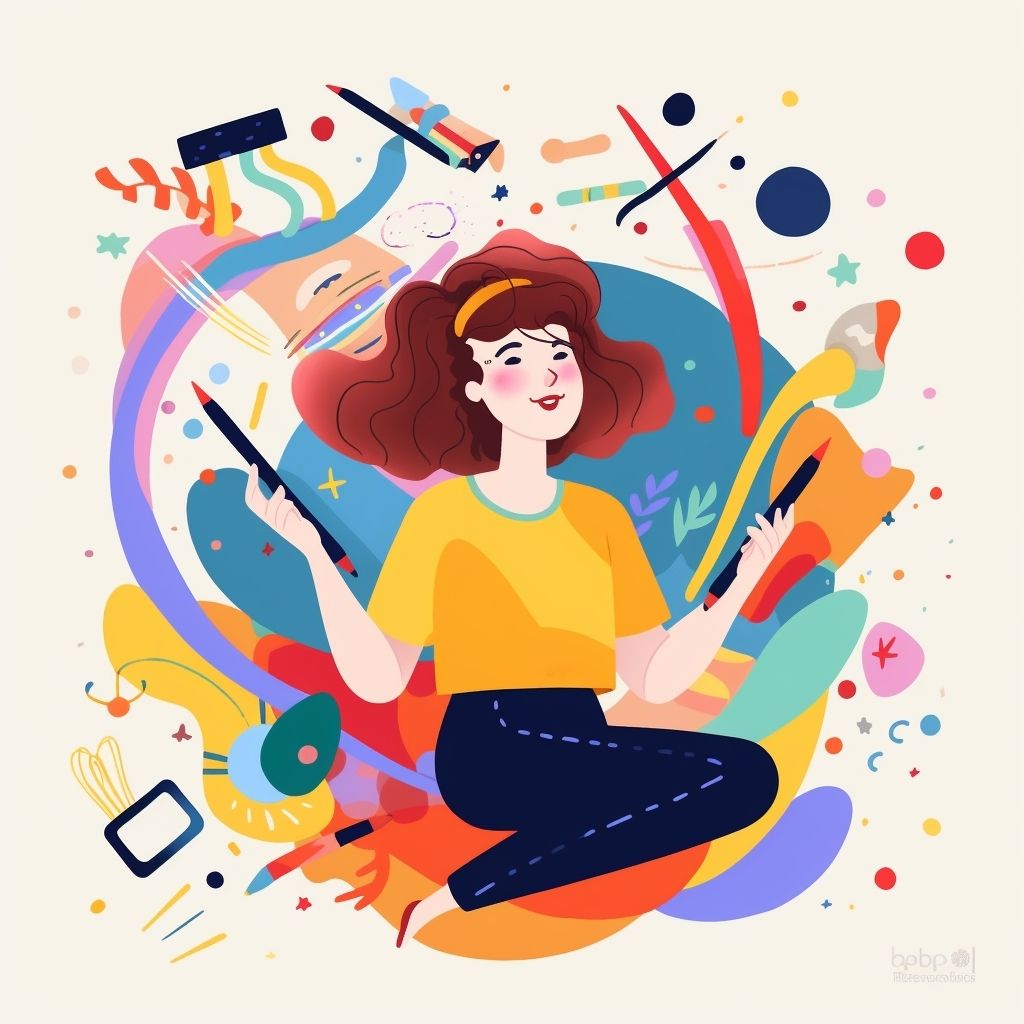
Art therapy engages various psychological and neurobiological mechanisms that contribute to its effectiveness in addressing depression:
- Emotional regulation: Creating art activates the limbic system, the emotional center of the brain, allowing individuals to regulate and express their emotions in a non-threatening manner. The process of creating art can facilitate emotional release, reduce distress, and provide a sense of relief.
- Symbolic expression: Art offers a symbolic language through which individuals can express and communicate their thoughts and feelings. Symbolism allows for the exploration of unconscious emotions and experiences that may be challenging to access directly. This symbolic expression can promote self-understanding and facilitate therapeutic insights.
- Neuroplasticity: Engaging in art-making stimulates neuroplasticity—the brain’s ability to reorganize and form new connections. Creating art can enhance neural networks involved in self-expression, emotional processing, and cognitive flexibility. This can lead to adaptive changes in brain structure and function, supporting emotional well-being.
How Art Helps Depression
Art therapy provides a unique avenue for individuals to express and process emotions, particularly those associated with traumatic experiences:
- Non-verbal expression: Art-making allows individuals to express emotions that may be difficult to put into words. Visual images, colors, and symbols can convey deep emotional states and experiences that may be challenging to articulate verbally.
- Safe exploration of traumatic memories: Art therapy provides a safe and contained space for individuals to explore and process traumatic memories. Through the creative process, individuals can externalize and gain distance from painful experiences, making them more manageable and facilitating healing.
- Narrative transformation: Art therapy can assist in reconstructing personal narratives related to traumatic experiences. By creating art and discussing the artwork with a therapist, individuals can gain new perspectives, reframe their narratives, and find meaning and resilience in their journey.
The Role of Creativity and Self-Expression in Promoting Mental Well-Being

Creativity and self-expression play a significant role in promoting mental well-being:
- Empowerment and autonomy: Engaging in the creative process allows individuals to exercise choice, make decisions, and take ownership of their artistic expressions. This fosters a sense of empowerment and autonomy, promoting positive mental well-being.
- Outlet for self-expression: Art provides a non-judgmental platform for individuals to express their unique thoughts, emotions, and experiences. This process of self-expression can enhance self-awareness, self-acceptance, and a sense of authenticity.
- Coping and resilience-building: Art-making cultivates problem-solving skills, flexibility, and adaptability—qualities that are essential for coping with life’s challenges. Through creative exploration, individuals can discover new strategies, perspectives, and strengths, fostering resilience and promoting mental well-being. Creativity and self-expression play a significant role in promoting mental well-being.
The Role of the Art Therapist
Art therapists are highly trained professionals who possess a unique combination of artistic skills and clinical knowledge. They typically hold a master’s degree in art therapy or a related field and have completed supervised clinical internships. Additionally, art therapists are often required to obtain licensure or certification to practice.
Their training encompasses a deep understanding of psychology, human development, and the therapeutic use of art. Art therapists also receive specialized training in assessment techniques, therapeutic interventions, and ethical considerations specific to the field. This comprehensive education equips them with the necessary skills to facilitate art therapy sessions effectively.
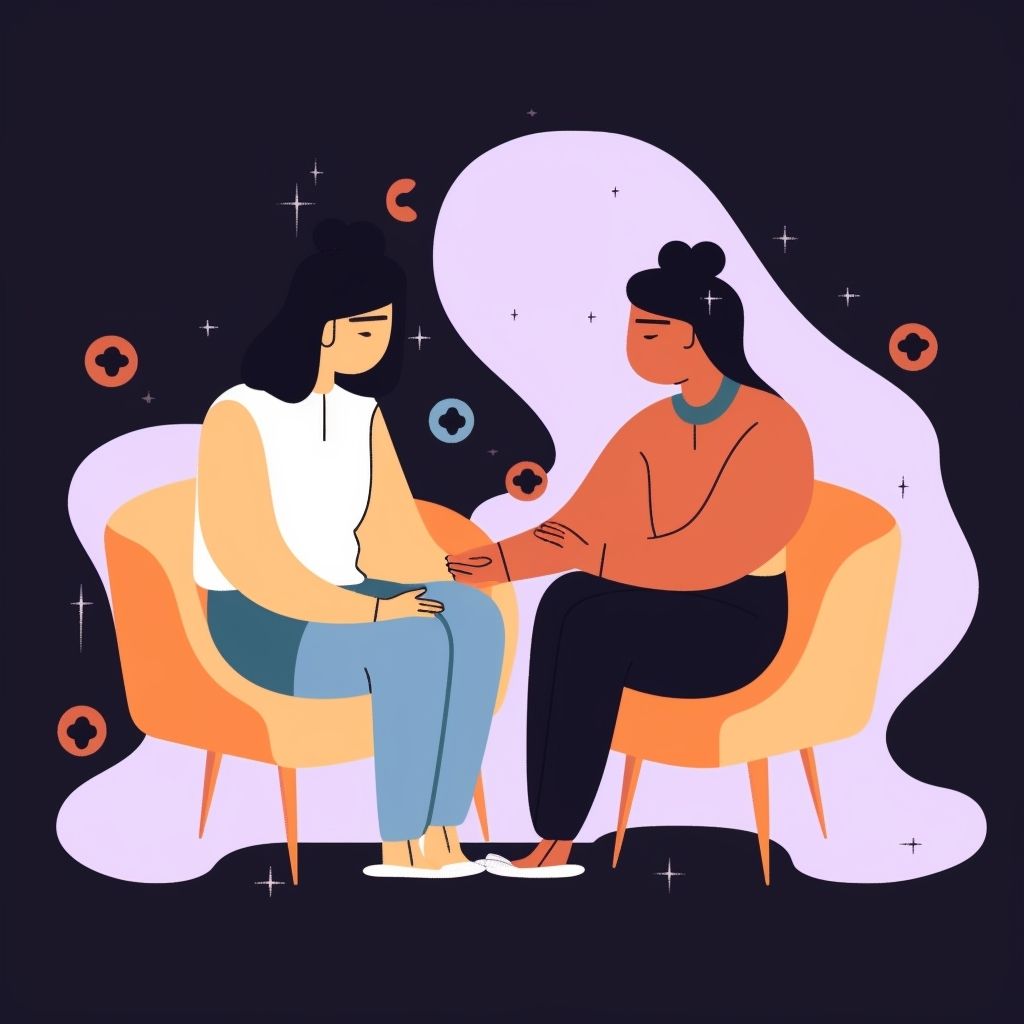
The art therapist plays a vital role in guiding and supporting individuals during art therapy sessions. They create a safe and supportive environment where clients feel comfortable expressing themselves through art. Some key aspects of the art therapist’s role include:
- Establishing rapport and trust: Art therapists build a strong therapeutic relationship with their clients, fostering trust and creating a safe space for self-expression. This trusting relationship forms the foundation for effective therapy.
- Assessing and formulating goals: Art therapists conduct assessments to understand clients’ needs, strengths, and challenges. Based on this assessment, they collaboratively develop treatment goals and strategies tailored to each individual’s unique needs.
- Facilitating the creative process: Art therapists guide individuals through the art-making process, offering techniques, materials, and interventions to support their exploration and self-expression. They provide gentle encouragement, while also respecting each individual’s creative choices and autonomy.
- Reflecting and processing: Art therapists engage in reflective discussions with clients, helping them explore the meaning and symbolism in their artwork. These discussions promote self-awareness, insight, and a deeper understanding of the emotional content expressed in the artwork.
The therapeutic relationship is a cornerstone of art therapy for depression. It is characterized by trust, empathy, and collaboration between the art therapist and the client. The therapeutic relationship in art therapy contributes to positive outcomes in the following ways:
- Trust and safety: The presence of a trusting and safe therapeutic relationship allows individuals with depression to feel supported and validated. This creates an environment where they can freely explore their emotions and experiences, facilitating healing and growth.
- Emotional containment: The art therapist provides emotional containment, offering support and understanding as individuals navigate their feelings and experiences. This containment helps individuals manage overwhelming emotions related to depression and fosters a sense of emotional stability.
- Validation and acceptance: Through the therapeutic relationship, art therapists provide validation and acceptance of individuals’ thoughts, emotions, and experiences. This validation helps counteract the negative self-perceptions often associated with depression and promotes a sense of self-worth and self-acceptance.
- Collaborative exploration: The therapeutic relationship in art therapy encourages collaboration and active participation. Art therapists work alongside clients, exploring and interpreting their artwork together, promoting self-reflection, and facilitating meaningful insights and personal growth.
Practical Application of Art Therapy Techniques

Art therapy encompasses a wide range of techniques that can be tailored to individuals’ needs. Here are some commonly used art therapy techniques for depression:
- Free painting or drawing therapy for depression: Individuals are encouraged to freely express their emotions and thoughts using various art materials. This technique allows for spontaneous and unstructured expression, facilitating emotional release and exploration.
- Collage: Individuals create collages by assembling images and materials that resonate with their emotions and experiences. Collage-making can help individuals explore and communicate complex feelings, as well as symbolically represent their journey toward healing.
- Mandala creation: Mandala-making involves creating symmetrical designs within a circular framework. The repetitive and meditative nature of this technique promotes relaxation, self-reflection, and a sense of inner harmony. It can also serve as a tool for exploring and integrating different aspects of the self.
- Guided imagery: Art therapists may guide individuals through visualizations or imaginative exercises while they create artwork. This technique helps individuals access deeper emotions, memories, and inner resources, promoting self-awareness and healing.
Art therapy for anxiety and depression can be incorporated into self-care routines, allowing individuals to engage in creative expression independently. Here are some ways individuals can integrate art therapy into their self-care practices:
- Establish a dedicated art space: Set up a space in your home where you can engage in art-making comfortably. Having a designated area can serve as a reminder to prioritize self-care and provide a conducive environment for creative expression.
- Regular art journaling: Maintain an art journal where you can freely express your thoughts, emotions, and experiences through art and writing. Use the journal as a tool for self-reflection, emotional processing, and personal growth.
- Engage in mindful art activities: Dedicate time to engage in art-making mindfully, focusing on the present moment and the sensory experience of creating. This can serve as a form of relaxation and stress relief, promoting overall well-being.
- Join art-based community programs or workshops: Explore local community programs or workshops that incorporate art-making for personal growth and well-being. Engaging in art alongside others can provide a sense of connection and support.
Tips for Finding Qualified Art Therapists or Resources for Self-Guided Art Therapy

- Seek referrals: Ask your primary healthcare provider, therapist, or counselor for recommendations on qualified art therapists in your area. They may have connections to professionals with experience in art therapy for depression.
- Contact professional organizations: Reach out to professional organizations such as the American Art Therapy Association (AATA) or your country’s equivalent. These organizations often provide directories or referral services to help individuals find qualified art therapists.
- Online resources: Explore reputable websites that offer resources and information on art therapy for depression. Look for resources backed by professionals in the field or organizations specializing in mental health.
- Self-guided art therapy resources: Utilize self-help books, online tutorials, or art therapy workbooks that provide guidance on engaging in art therapy techniques independently. These resources can offer structured activities and prompts to facilitate self-exploration and emotional expression.
HealWiser’s Last Piece of Advice
Art therapy holds significant potential as a complementary treatment for depression. It offers a unique and creative pathway for individuals to explore and express their emotions, process traumatic experiences, and foster mental well-being. By incorporating art therapy into their lives, individuals can embark on a journey of self-discovery, healing, and personal growth.
As you consider your own path toward mental well-being, we encourage you to explore the potential benefits of art therapy for depression. Seek qualified art therapists who can guide and support you on this transformative journey. Embrace the power of art and creativity as tools for self-expression, emotional healing, and personal transformation. Remember, you have the ability to harness the healing potential within you.
Share your experience with HealWiser and others in the comments section below this post.


